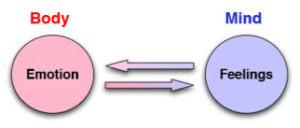How understanding emotions and feelings can make you a better sales person
Why we teach emotional intelligence in our sales training courses
Being in touch with your emotions and feelings not only helps you live a fulfilling life, but can also help you understand others, which is a vital skill in sales training. In our sales workshops at Dynamo Selling, we teach clients about the relationship between emotions and feelings and how you can identify emotions in others.
Feelings and emotions are like two sides of a coin
Emotions: Emotions are physiological, therefore they can be measured objectively by blood flow, brain activity, facial expressions and body stance. For example, when we feel fearful, our heart rate and blood pressure increase. These are chemical reactions that result from an emotion, which often lead to physical behaviours (i.e. punching a wall when angry). We can read other peoples physical behaviour, body language and micro expressions to give us an insight into their emotions.
Feelings: A feeling is a mental portrayal of what is going on in your body when you have an emotion. It is the by-product of your brain perceiving and assigning meaning to the emotion. Feelings are the next thing that happens after having an emotion, they involve cognitive input, are usually subconscious, and cannot be measured precisely.
Emotions are generally predictable and easily understood, while feelings are often idiosyncratic and confusing.
Our experiences in life affect our emotions and perspective
“Emotions are not hardwired but learned and shaped by our experiences in life,”
– Lisa Feldman Barrett, North Eastern University Professor
Everyone has the same kinds of neural networks but the wiring differs dependent on experience. The way that people interpret the sensations differ by culture. This is something to be mindful of, because different people will react differently to certain cues.

The relationship between emotions and feelings
As you can see in the diagram above, an emotion comes first, then come the feelings associated with it. This means that we should emphasise emotional selling to illicit a desirable emotion from the client which will in turn influence their feelings towards you and your product/service. We can measure their emotions through physiological cues, which will guide our next step. This is one of the areas we focus on throughout our sales training courses.
How we use this knowledge in our sales training
As emotions have physiological responses associated with them, we can learn to identify certain facial expressions and body language to give us an insight into how the client is feeling. We can then use this knowledge to guide our next step to elicit a desirable emotion in response to the sales experience.
However selling based on feelings and emotions should involve a two pronged approach:
1. Self: We should first focus on our own emotions and our feelings associated with them. Especially in regards to the methods we use to calm our anxieties and feel content. This process will help us become familiar with the relationship between emotions and feelings, so we can then use this in sales.
2. Clients: Once we are grounded and have a good idea of how emotions and feelings interact, we can then start to strategise how to read and influence the emotions and feelings of our clients.
Finally the most important sales training tip to be taken from this blog is that it has been scientifically proven that people forget what you said or what you did, but they will never forget the way you made them feel.
If you are interesting in learning more about the relationship between emotions and feelings and how this integrates into our sales training packages, please get in touch!









